A strong earthquake in Osaka, Japan has killed at least three people, including a child, and injured more than 200.
Airports in the area were closed for several hours, train lines interrupted and factories had to halt production.
The 6.1 magnitude quake did not trigger a tsunami warning and nuclear plants in the area are operating normally.
Japan lies in a particularly earthquake-prone region and accounts for around 20% of quakes worldwide of magnitude 6.0 or more.
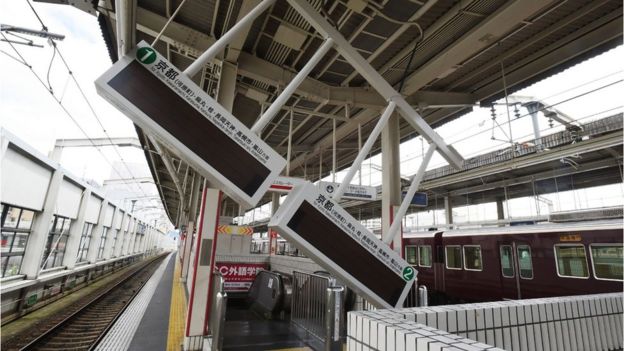 Image copyrightAFP
Image copyrightAFP
Monday’s quake in Osaka occurred just before 08:00 local time (23:00 GMT Sunday) north of the city, the meteorological agency said.
A nine-year old girl killed by a falling wall at her school was one of three confirmed fatalities.
An elderly man was also killed by a collapsing wall while another was trapped below a bookcase at home, national broadcaster NHK reported.
‘I thought my time was up’
Atsushi Yokoi, a research scientist who lives in Ibaraki-shi near the epicentre of the tremor, told the BBC he was asleep when the quake struck.
“The earthquake woke me up,” he said. “It felt like strong sideways shaking and lasted about five seconds, and I stayed there until it stopped.”
After sending messages to his family and friends, he went to work to check the damage to his research equipment.
“Though most public transport was still paralyzed, buses were working. All the experiments planned were cancelled and postponed until we are absolutely sure that there’s no risk of an aftershock.”
— (@ayokoi_exp)Ibaraki-shi resident Gloria Randriamihaja was also woken by the earthquake.
“It only lasted a minute but it seemed so long. My apartment was messed up, broken glasses on the floor, fridge open, my guitar fell down.”
“The whole building was shaking, I was so scared, telling myself ‘Gloria this is it, your time is up.’ Finally the [shaking] stopped,” she told the BBC.
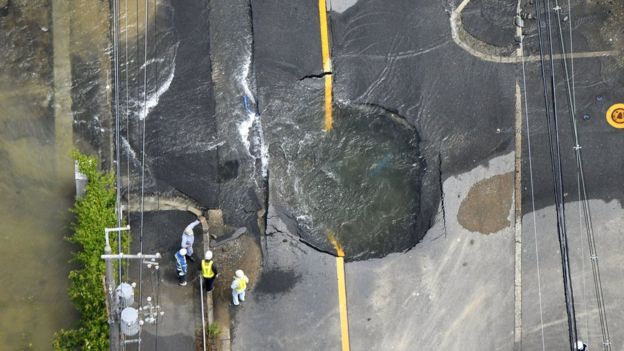
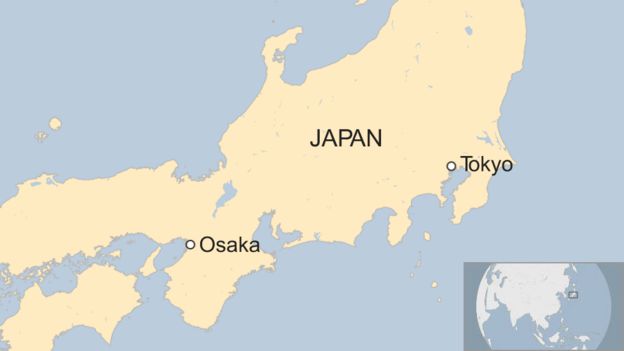
Several people were trapped in elevators and roads were cracked with broken pipes spilling water.
Some 170,000 houses were left without power and gas supplies to more than 100,000 homes were stopped, the Japan Times reported.
The earthquake registered as 6.1 on the country’s scale, a level at which it is difficult to remain standing.
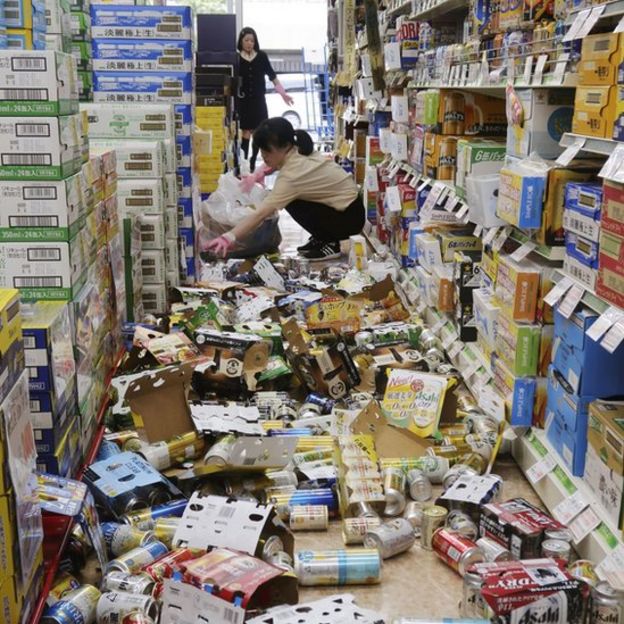 Image copyrightREUTERS
Image copyrightREUTERS
Both the high-speed Shinkansen and local trains suspended operations during the morning commuting hours.
The quake also affected the prefectures of Kyoto, Nara, Hyogo, and Shiga.
The meteorological agency warned the quake might be followed by another big tremor in the coming days.
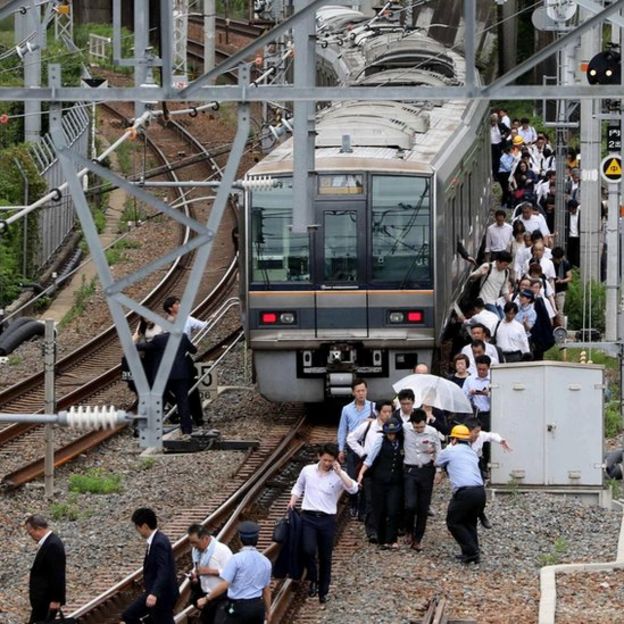 Image copyrightEPA
Image copyrightEPA
There are also warnings that rain and landslides will continue to pose a danger for several days.
The quake also hit several key industrial areas near Osaka with companies like Panasonic and Daihatsu saying they were suspending production at their affected sites.
Source: BBC


Comments